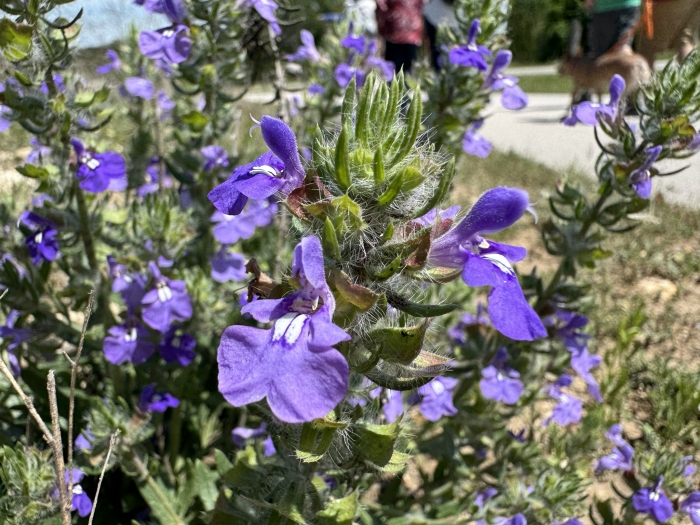Texas Sage
(Salvia texana)
Texas Sage (Salvia texana)
/
/

© Gary Bowers
CC BY 4.0
Image By:
© Gary Bowers
Recorded By:
Copyright:
CC BY 4.0
Copyright Notice:
Photo by: © Gary Bowers | License Type: CC BY 4.0 | License URL: http://creativecommons.org/licenses/by/4.0/ | Uploader: ubowernat | Publisher: iNaturalist |

























Estimated Native Range
Summary
Salvia texana, commonly known as Texas Sage, is a herbaceous perennial native to the limestone-rich soils of the Chihuahuan Desert and semi-arid grasslands in Texas, New Mexico, and Mexico. It is well-adapted to dry, rocky areas and open spaces, thriving in full sun and well-drained conditions. Texas Sage typically reaches a height of 1 to 1.5 feet and has a similar spread, featuring hairy lanceolate-oblanceolate leaves that contribute to its drought tolerance.
The plant is valued for its long blooming season, with purple-blue flowers that are smaller and darker than those of Salvia engelmannii. The flowers are quite showy and attract pollinators, blooming from late spring to early fall. Texas Sage is often used in xeriscaping, rock gardens, and as a border plant due to its low water requirements and ability to thrive in poor soils. It is also appreciated for its aromatic foliage and resilience against pests and diseases. However, it does not tolerate wet or poorly drained soils, which can lead to root rot.CC BY-SA 4.0
The plant is valued for its long blooming season, with purple-blue flowers that are smaller and darker than those of Salvia engelmannii. The flowers are quite showy and attract pollinators, blooming from late spring to early fall. Texas Sage is often used in xeriscaping, rock gardens, and as a border plant due to its low water requirements and ability to thrive in poor soils. It is also appreciated for its aromatic foliage and resilience against pests and diseases. However, it does not tolerate wet or poorly drained soils, which can lead to root rot.CC BY-SA 4.0
Plant Description
- Plant Type: Herb
- Height: 1-2 feet
- Width: 1-2 feet
- Growth Rate: Moderate
- Flower Color: Blue, Purple
- Flowering Season: Spring
- Leaf Retention: Deciduous
Growth Requirements
- Sun: Full Sun, Part Shade
- Water: Low
- Drainage: Fast, Medium, Slow
Common Uses
Bee Garden, Butterfly Garden, Drought Tolerant, Groundcover, Low Maintenance
Natural Habitat
native to the limestone-rich soils of the Chihuahuan Desert and semi-arid grasslands in Texas, New Mexico, and Mexico
Other Names
Common Names: Texas Blue Sage
Scientific Names: Salvia texana , Salvia texana var. canescens , Salviastrum canescens , Salviastrum texanum , Salviastrum texanum var. canescens
GBIF Accepted Name: